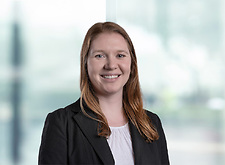Proposed LMI CDG Adder May Come as a Disappointment to the Solar Industry as New York Incentives Continue to Sunset
Last spring, the New York State Public Service Commission (“PSC”) issued its Order Extending and Expanding Distributed Solar Incentives,[1] approving an extension of the NY-Sun program (the State’s distributed solar incentive program) through 2025. That included $111 million allocated to the Community Adder incentive for Community Distributed Generation (“CDG”) projects. The Community Adder incentive was the successor to the Community Credit component of the Value of Distributed Energy Resource (“VDER”) tariff, and came as a welcome relief to stakeholders who have continuously voiced concern about the future of the solar industry in New York as incentives continue to sunset.
Now, almost a year later, funding under the Community Adder is nearly exhausted and there is uncertainty as to what, if any, extent that it may be refreshed. Several months ago, the New York State Energy Research and Development Authority (“NYSERDA”) started working on the design of a new Inclusive Community Solar Adder (“LMI CDG Adder”) for community solar projects that serve low-to-moderate income households and disadvantaged communities. The LMI CDG Adder would be an important step towards meeting the environmental justice goals of recent state climate change. But as described below, the new Adder is unlikely to mitigate the loss of the Community Adder.
At first, it appeared that the LMI CDG adder would be the only incentive available across the State raising concern among stakeholders about the profitability of future projects and forcing them to turn their attention towards improving other value stack components, such as revisions to the E-Value.
Now, there is reason to be more hopeful as NYSERDA has recently announced a technical conference on April 21, 2021 (the “April Technical Conference”) to discuss future market development mechanisms for commercial, industrial, and other non-residential projects following the exhaustion of the existing Market Transition Credits and Community Credit and Community Adder Allocations. While this is encouraging, the industry must continue to follow the development of the LMI CDG adder as it awaits the April Technical Conference and additional insight from NYSERDA.
LMI CDG Adder Straw Proposal
Several months ago, NYSERDA issued a Request for Information (“RFI”)[2] to engage stakeholders and gather feedback on a Straw Proposal for an LMI CDG Adder program. Below is a summary of the Straw Proposal as well as an overview of the responses to the RFI that were discussed at the recent workshop on March 25, 2021 (the “Workshop”).
Project Eligibility
As set forth in the Straw Proposal, projects will be required to meet the following eligibility rules:
- Projects must meet the requirements of the NY-Sun Commercial/Industrial or NY-Sun Nonresidential incentive program;
- Projects that have already secured NY-Sun incentives may apply for the Inclusive Community Solar Adder, as an additional incentive on to top of what they already secured, at any point prior to completing the project (g., submitting a commercial operation invoice to NYSERDA);
- Community solar projects that are in the Upstate region (areas served by National Grid, RG&E, NYSEG, CHG&E, and O&R) would only be eligible for the Inclusive Community Solar Adder if they are eligible for/have received the Community Adder, or meet the requirements of the Community Adder if those funds have been exhausted. Notably, NYSERDA is proposing that Upstate projects that receive Phase One NEM, the Market Transition Credit, or Community Credit would not be eligible.; and
- Community solar projects in the ConEdison region would be eligible whether or not they have received/are eligible for the Community Credit.
On review, some find the eligibility rules to be overly inclusive. The New York Solar Energy Industries Association (“NYSEIA”) recommended that the LMI CDG Adder be limited to only projects that will not be receiving the Community Adder, Phase One Net Energy Metering (“NEM”), the Market Transition Credit or the Community Credit, as those projects have progressed to a certain level of financial viability while other projects, where the additional adder is needed the most, may be left without limited financial viability.
At the Workshop, NYSERDA disregarded this suggestion, confirming that all pipeline projects will be eligible but further clarified that projects already in operation will not be allowed to apply.
Subscriber Requirements
The defining characteristic of the Straw Proposal is that the LMI CDG Adder will be available to those projects allocating a minimum threshold of their output to LMI households and/or residents of disadvantaged communities. Once finalized, the LMI CDG Adder program will, at a minimum, significantly exceed the “baseline” level of participation by LMI subscribers and residents of disadvantaged communities in the current community solar market, and roughly match the proportion of eligible subscribers in the overall population (based on population estimates for the designated interim disadvantaged communities).
To meet this objective, NYSERDA proposes that projects meet a set of minimum requirements for allocating generation to eligible residential subscribers. Specifically, there would be two ways in which projects may qualify:
- Option 1: Projects in the Upstate region must allocate at least 20% of project generation to eligible residential subscribers, and projects in the ConEdison region would be required to allocate at least 40% of project generation to eligible residential subscribers.
- Option 2: Projects in the Upstate region must allocate at least 15% of project generation to eligible residential subscribers, and allocate at least 20% of project generation to eligible affordable housing/nonresidential subscribers. Projects in the ConEdison region must allocate at least 30% of project generation to eligible residential subscribers, and allocate at least 20% of project generation to eligible affordable housing/nonresidential subscribers.
In addition, NYSERDA is proposing a higher incentive level, applied on a sliding scale, for projects that allocate a greater percentage of their generation to eligible residential subscribers above the minimum requirements:
- Projects in the Upstate region would receive a higher incentive level based on actual allocations, up to 40% of project generation.
- Projects in the ConEdison region would receive a higher incentive level based on actual allocations, up to 60% of project generation.
Eligible Subscriber Definitions
The Straw Proposal further sets forth the following criteria for eligible subscribers:
- Any residential electric utility customer, including homeowners, renters, and residents of multifamily buildings, can be eligible.
- Sub-metered residents can also be eligible if there is direct savings pass-through from a community solar subscription on a master-metered account.
- Any residential subscriber who lives in a designated disadvantaged community would be considered eligible without further documentation. A map of interim disadvantaged communities and address locator can be found on NYSERDA’s website.
- Any residential subscriber that does not live in a designated disadvantaged community would be considered eligible if they have a documented household income under 80% of Area Median Income (AMI) or 80% of State Median Income (SMI), whichever is higher.
- Once a subscriber has been deemed eligible and allocated to a project, they will be considered eligible for the duration of the project, including if they choose to move within the utility service territory.
In addition, NYSERDA suggests that affordable housing providers and nonresidential utility customers serving residents of disadvantaged communities (for example, local nonprofit organizations) may be considered eligible subscribers. NYSERDA also clarified that projects in Upstate and ConEd region will now have the same minimum and maximum allocation requirements:
- Minimum is set at 20% residential allocation; and
- The adder will now ramp up to 100%: Projects that are 100% filled with eligible subscribers (residential only or residential/non-residential mix) will receive the highest adder available.
In response to the RFI, a number of stakeholders urged NYSERDA to adopt a non-residential subscriber definition. NYSERDA has explained that it is exploring ways to expand the program to include small business in disadvantaged communities at a later date but for now the definitions are as outlined above.
NYSERDA is also considering some additional requirements for projects receiving the LMI CDG Adder, such as the submission of a marketing plan and sample subscription agreement that complies with the EBP-DERs. In addition, projects would not be allowed to require minimum FICO scores for the portion of the project used to demonstrate eligibility for the LMI Adder.
At the Workshop, NYSERDA provided further detail on the income verification process for eligible subscribers. Verification may be achieved in one of four ways: (1) customers who receive SNAP, HEAP, Section 8, Utility Bill Assistance, etc. can demonstrate eligibility by providing proof of assistance; (2) interim disadvantaged community maps may be used to identify geo-eligible customers, however, these customers will also be required to report and certify their income; (3) all affordable housing residents will be considered eligible if a property meets the eligibility requirements of NYSERDA’s Multifamily Affordable Housing Adder; and (4) developers may propose another income verification method which NYSERDA may accept if it is easy for customers to use and has statistical weight and accuracy.
NYSERDA also made clear that developers will be required to submit names, addresses, and contact information for all project subscribers receiving the LMI CDG Adder. Developers will be required to explain how they verified each subscriber’s eligibility and will be required to maintain records for this that may be subject to random audit.
Proposed Incentive Levels
NYSERDA also provided a range of potential incentive levels for the LMI CDG Adder:
- The proposed range is $.05 per Watt DC to $.10 per Watt DC for the portion of the project allocated to eligible subscribers.
- For example, if the adder incentive level is set at $.05/W, a 5 MWdc project that achieves the minimum required allocation for eligible residential subscribers (20%, equivalent to 1 MWdc in this example) would receive an additional $50,000.
- In this example, if the project achieved an allocation of 40% eligible residential subscribers (equivalent to 2 MWdc), it would receive an additional $100,000.
- Based on the final incentive levels and program design, NYSERDA proposes to provide transparent guidance on the funding/capacity available through an online dashboard or similar means.
On review, several stakeholders have expressed support for the proposed “sliding scale” structure of the Inclusive Adder, but note that the proposed level of $0.05-$0.10 per watt incentive amount is not adequate to fully incentivize and account for the additional costs in targeting LMI communities.
At the Workshop, NYSERDA provided additional background on an Environmental Justice Bonus Incentive that will provide projects sited in EJ communities with an additional $0.10/W ($0.20/W total) for capacity allocated to eligible subscribers. To qualify for this incentive, projects will be required to meet the following criteria: (1) sited within predefined “preferred load areas,” designated by ConEd’s load area maps; (2) sited within a designated interim disadvantaged community; (3) at least 40% of project capacity must be dedicated to eligible subscribers from the surrounding community; and (4) the project Implementation Plan must include close partnerships with local community organizations and stakeholders.
Incentive Payment Process and Schedule
Finally, the Straw Proposal proposes the following payment schedule and process for the LMI CDG Adder:
- For projects receiving NY-Sun Commercial/Industrial incentives, the Inclusive Community Solar Adder is to be paid to the project at the same time as the base NY-Sun incentive and, if applicable, Community Adder.
- This would include one payment of 50% of the adder upon project completion, and payments of up to 25% of the adder on the first and second anniversaries of project completion, subject to adjustment for project energy production.
- Projects receiving the NY-Sun Nonresidential incentive would also receive payment of the Inclusive Community Solar Adder over three payments (50% at project completion, 25% on the first anniversary, 25% on the second anniversary).
In addition, NYSERDA proposes that for each payment, documentation will need to be provided demonstrating the requirements for eligible subscriber allocations have been met.
In response to the payment schedule, NYSEIA recommends that 100% of the Inclusive Adder be paid up-front to the project. NYSEIA explains that under the proposed 50%/25%/25% payment schedule, the entire incentive will not be able to be financed, unlike the Community Adder and PBI MW incentive, as LMI customers will be signing short-term contracts and the financiers will argue that there is no guarantee that they will remain at the end of year 1 and year 2. As such, 50% of the incentive will not be able to be financed or modeled for in the project capital stack.
At the Workshop, NSYERDA confirmed that the payment schedule would remain as set forth in the Straw Proposal.
Conclusion
In terms of next steps for the LMI CDG adder, NYSERDA will receive written feedback on the Straw Proposal until April 9. Thereafter, it is anticipated that a final program will be issued in late April or early May with the LMI CDG Adder becoming available sometime this spring or summer.
Although the program is still under development, the suggestion that the incentive levels will range between $.05 per Watt DC to $.10 per Watt DC is an indication that the LMI CDG Adder will not serve as a wholesale replacement for the Community Adder. As such, the industry is anxiously awaiting the April Technical Conference to learn more about a possible funding refresh or replacement mechanism. Depending on this outcome, , the industry’s attention will also need to turn toward improving the VDER tariff as an alternate means for improving the financials of future projects. Specifically, the solar industry may concentrate its efforts on updating the E-Value based on the cost of carbon guidance from the New York State Department of Environmental Conservation (see our alert here on that topic), and the DRV, and perhaps introducing an “avoided transmission cost” component to the VDER stack. Unfortunately, any changes to the VDER tariff will be subject to lengthy deliberation and it may be a year or more before we have a final decision on the matter.
As New York State’s renewable energy regulatory environment continues to unfold, Hodgson Russ’s Renewable Energy Practice is ready and available to answer your questions. Please do not hesitate to reach out Dan Spitzer (716.848.1420), Mila Buckner (646.218.7658) or any member of our team.
[1] Case 19-E-0735, Proceeding on Motion of the New York State Energy Research and Development Authority Requesting Additional NY-Sun Program Funding and Extension of Program Through 2025, Order Extending and Expanding Distributed Solar Incentives (issued May 14, 2020), available at http://documents.dps.ny.gov/public/Common/ViewDoc.aspx?DocRefId={A67E946F-40B0-49C4-93CD-7BC454987CDF}.
[2] https://portal.nyserda.ny.gov/servlet/servlet.FileDownload?file=00Pt000000R4VsNEAV
Featured
- Partner
- Partner
- Partner
- Partner
- Partner
- Partner
- Partner
- Partner
- Senior Associate
- Partner
- Partner
- Co-Chair of the Firm, Partner
- Partner













